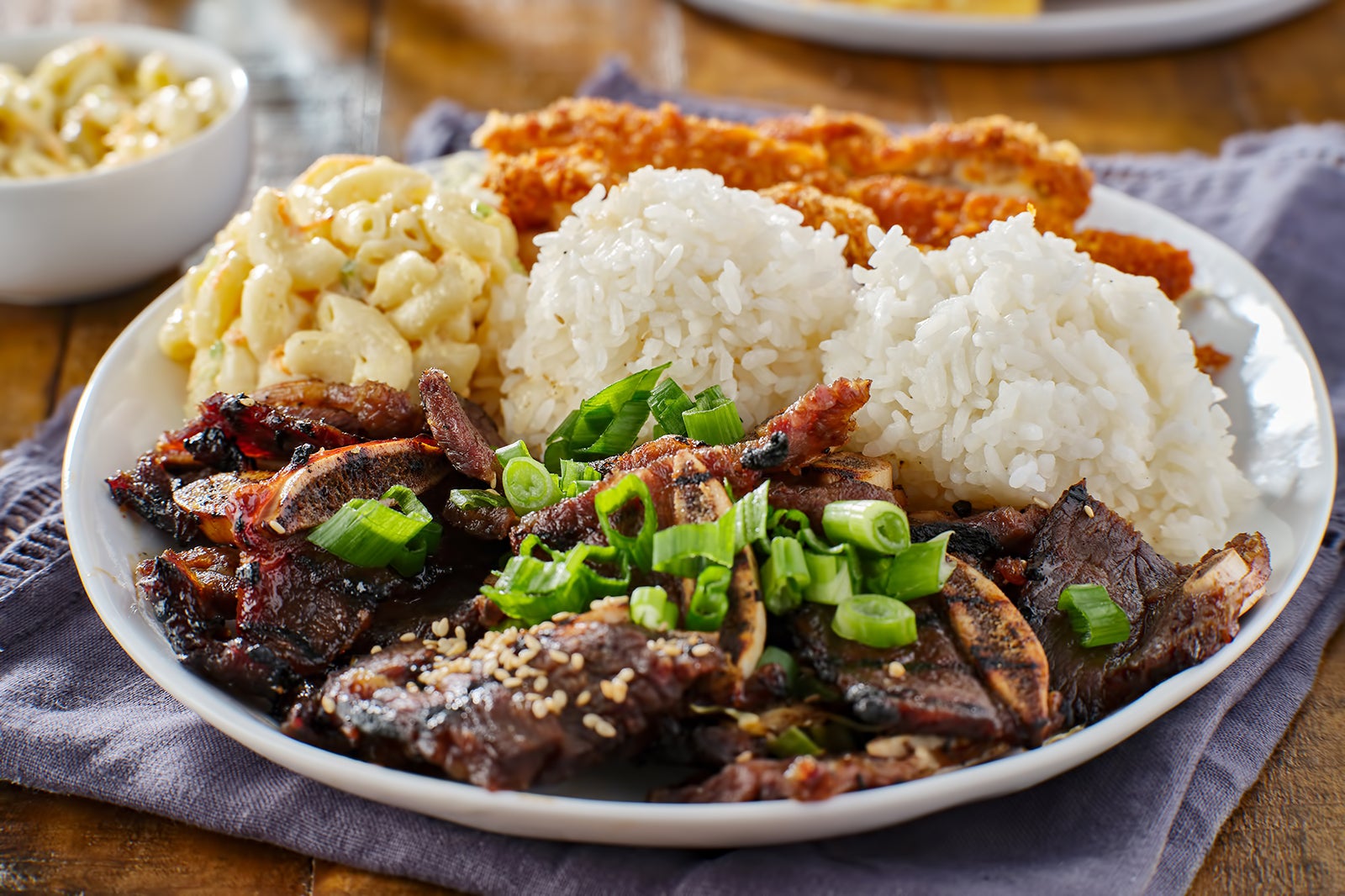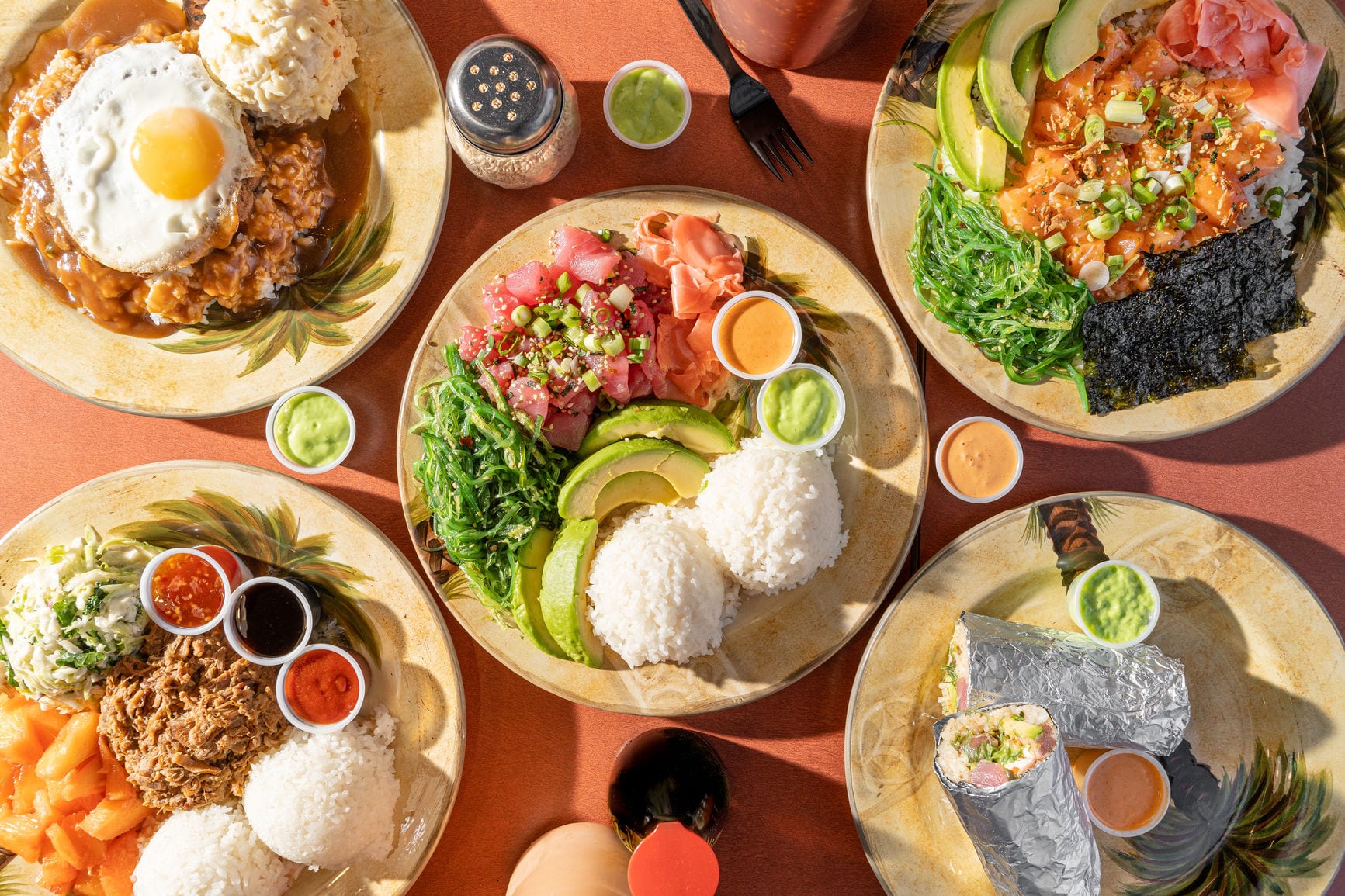Typical Polynesian meals is a vibrant and numerous culinary tapestry that displays the wealthy cultural heritage and geographical influences of the Pacific islands. From conventional dishes cooked in earth ovens to up to date fusion delicacies, Polynesian meals gives a tantalizing mix of flavors, textures, and cultural significance.
The staples of Polynesian cooking embody root greens, akin to taro and yams, recent seafood, and tropical fruits. Conventional cooking strategies contain steaming, roasting, and grilling, with the “umu” or earth oven taking part in a central position in lots of Polynesian cultures.
Definition and Origin of Polynesian Meals
Polynesian meals encompasses the various culinary traditions of the indigenous peoples inhabiting the huge expanse of the Polynesian Triangle, stretching from New Zealand within the southwest to Hawaii within the northeast, and Easter Island within the southeast.
The origins of Polynesian delicacies may be traced again to the Lapita folks, who migrated from Southeast Asia to the Pacific islands round 1500 BCE. Over centuries, Polynesian voyagers introduced their culinary practices and information of crops and animals to the assorted islands they settled, resulting in the event of distinct regional variations.
Historic Influences
Polynesian delicacies has been influenced by a myriad of historic components, together with:
- Geographical Isolation:The remoteness of the Polynesian islands fostered a reliance on native assets, resulting in the event of distinctive culinary traditions based mostly on out there components.
- Cultural Trade:Contact with different cultures, akin to Melanesian and Micronesian peoples, resulted within the change of culinary concepts and methods, enriching the Polynesian culinary repertoire.
- European Colonization:The arrival of European explorers and settlers launched new components and cooking strategies, which have been step by step integrated into Polynesian delicacies, making a fusion of conventional and trendy flavors.
Staple Components and Cooking Strategies: Typical Polynesian Meals
Polynesian delicacies is characterised by its reliance on recent, native components and conventional cooking strategies which were handed down via generations. The first components utilized in Polynesian cooking embody:
- Seafood:Fish, shellfish, and crustaceans are a staple a part of the Polynesian food plan, offering protein and important vitamins.
- Coconut:Coconuts are utilized in quite a lot of kinds, together with coconut milk, coconut cream, and coconut oil, including taste and richness to dishes.
- Taro:A root vegetable that may be a staple meals supply, offering carbohydrates and fiber.
- Breadfruit:A starchy fruit that may be cooked in numerous methods, offering a supply of carbohydrates and dietary fiber.
- Candy potato:A candy and versatile vegetable that’s typically roasted, boiled, or fried.
Conventional Polynesian cooking strategies embody:
- Umu (earth oven):An underground oven used to prepare dinner meals slowly and evenly, imparting a novel smoky taste.
- Imu (pit oven):Much like the umu, however smaller and used for smaller portions of meals.
- Lovo (stone oven):Heated stones are positioned in a pit, and meals is wrapped in leaves and cooked on prime of the stones.
- Hangi (steam oven):A pit is dug and lined with leaves, and meals is positioned inside and lined with extra leaves, then steam is generated by pouring water over sizzling stones.
Significance of the “Umu” or Earth Oven
The umu, or earth oven, holds a big place in Polynesian tradition. It’s a conventional methodology of cooking that has been used for hundreds of years to organize meals for particular events and group gatherings. The umu is an emblem of group and sharing, because it requires the cooperation of a number of people to construct and preserve the fireplace.
The umu additionally imparts a novel taste to meals, because the meals is cooked slowly and evenly within the underground oven. The smoky taste of the umu is very prized in Polynesian delicacies, and dishes cooked on this method are thought-about a delicacy.
Common Dishes and Delicacies
Polynesian delicacies boasts a various array of delectable dishes and delicacies, reflecting the area’s wealthy cultural heritage. From conventional staples to up to date culinary creations, Polynesian meals tantalizes style buds with its distinctive flavors and vibrant presentation.
Conventional Delicacies
*
-*Poi
A Polynesian staple, poi is a thick paste constructed from fermented taro root. It has a barely bitter style and is commonly served as a aspect dish or accompaniment to meat and fish.
-
-*Kalua Pig
A conventional Hawaiian dish, kalua pig is ready by slow-roasting a complete pig in an underground oven lined with sizzling rocks. The result’s succulent, tender meat with a smoky taste.
-*Oka
A Fijian delicacy, oka is a uncooked fish dish marinated in citrus juice, coconut milk, and spices. It’s served with greens and is thought for its refreshing and tangy style.
Up to date Creations
*
-*Polynesian Poke Bowl
A contemporary tackle the basic Hawaiian poke, this dish options uncooked fish marinated in quite a lot of sauces and topped with greens, fruits, and grains.
-
-*Taro Chips
Crispy and flavorful, taro chips are constructed from thinly sliced taro root that’s fried till golden brown. They’re typically served with dips or as a snack.
-*Mango Sticky Rice
A well-liked dessert in lots of Polynesian nations, mango sticky rice is made with candy glutinous rice topped with ripe mangoes and drizzled with coconut cream.
Cultural Significance
Sure Polynesian dishes maintain deep cultural significance. For instance, poi is taken into account a sacred meals in Hawaii and is commonly served at ceremonial events. Kalua pig is a standard dish ready for particular occasions and is an emblem of hospitality and celebration.
Oka, alternatively, is a staple in Fijian delicacies and is believed to have medicinal properties.
Regional Variations and Influences

Polynesian delicacies displays a captivating array of variations throughout totally different island teams, reflecting the various cultural heritage and environmental situations of every area.
Exterior influences, significantly from Asian and European cuisines, have additionally left an indelible mark on Polynesian cooking, leading to a wealthy tapestry of flavors and methods.
Regional Culinary Traditions
- Hawaii:Identified for its vibrant use of recent seafood, akin to poke (uncooked fish salad), kalua pig (roasted pig cooked in an underground oven), and poi (pounded taro root).
- Tahiti:Characterised by its use of coconut milk and seafood, as evident in dishes like poisson cru (uncooked fish marinated in citrus juice) and fafaru (fish soup).
- Tonga:Well-known for its conventional feast referred to as ‘umu, which entails cooking meals in an underground oven, together with dishes like pork, hen, and taro.
- Samoa:Identified for its staple dish of palusami (taro leaves cooked in coconut cream) and oka (uncooked fish salad).
- Prepare dinner Islands:Notable for its use of fermented meals, akin to ikamata (fermented breadfruit) and papaya salad.
Influences of Different Cuisines
Polynesian delicacies has been influenced by quite a lot of different cuisines, together with:
- Asian:The usage of soy sauce, ginger, and garlic, in addition to methods like stir-frying and steaming.
- European:The introduction of latest components akin to beef, pork, and wheat, in addition to cooking strategies like baking and roasting.
Well being and Dietary Facets

Polynesian delicacies is usually thought-about nutritious and balanced, offering important vitamins for total well being and well-being.Polynesian staples like root greens, fruits, and fish are wealthy in nutritional vitamins, minerals, and antioxidants. Root greens like taro and yams are glorious sources of advanced carbohydrates, dietary fiber, and nutritional vitamins B and C.
Fruits akin to bananas, papayas, and pineapples present ample quantities of nutritional vitamins A, C, and potassium. Fish, a cornerstone of Polynesian diets, is a lean protein supply full of omega-3 fatty acids, important for coronary heart and mind well being.
Conventional Polynesian Components for Medicinal Functions
Past sustenance, many conventional Polynesian components have been used for medicinal functions for hundreds of years. For instance, noni fruit, native to the islands, is believed to have anti-inflammatory and antioxidant properties and has been historically used to deal with a variety of illnesses, together with ache, infections, and pores and skin situations.
Turmeric, one other frequent ingredient, possesses anti-inflammatory and antimicrobial properties and has been used to deal with wounds, burns, and digestive points.
Meals in Polynesian Well being and Properly-being, Typical polynesian meals
In Polynesian cultures, meals holds deep significance past its dietary worth. Conventional Polynesian diets emphasize the significance of stability, selection, and moderation. Meals is commonly ready utilizing recent, regionally sourced components, preserving their dietary integrity. Communal eating is a central facet of Polynesian tradition, fostering social bonds and reinforcing the significance of shared meals and group well-being.
Cultural Significance and Social Customs

Meals holds a profound cultural significance in Polynesian society, deeply intertwined with traditions, rituals, and social interactions.
Ceremonies, Rituals, and Celebrations
Polynesian delicacies performs a pivotal position in numerous ceremonies, rituals, and celebrations. Throughout sacred events, akin to weddings, funerals, and non secular festivals, meals choices are made to deities and ancestors, symbolizing respect, gratitude, and the continuation of cultural heritage.
Social Customs and Etiquette
Polynesian eating etiquette is rooted in communal sharing and hospitality. The idea of “feaaloafia’i,” or sharing meals, fosters a way of unity and reinforces social bonds. Communal feasts are frequent, the place dishes are ready and shared amongst household, pals, and the group.
- Respect for elders: It’s customary to supply the primary portion of meals to elders as an indication of respect.
- Avoidance of waste: Meals is taken into account a present, and it’s thought-about disrespectful to waste it.
- Taboos: Sure meals could also be taboo for particular people or throughout specific durations, based mostly on cultural beliefs and traditions.
Fast FAQs
What are some fashionable Polynesian dishes?
Some well-known Polynesian dishes embody poi (pounded taro root), kalua pig (roasted pig cooked in an earth oven), and poke (uncooked fish salad).
How does the “umu” or earth oven work?
The “umu” is a standard Polynesian cooking methodology that entails digging a pit within the floor and lining it with sizzling stones. Meals is positioned on prime of the stones and lined with banana leaves and earth, making a steamy setting that cooks the meals slowly and evenly.
What’s the cultural significance of meals in Polynesian society?
Meals holds a central place in Polynesian tradition, serving as a method of sustenance, an emblem of hospitality, and a technique to join with ancestors and the pure world.

